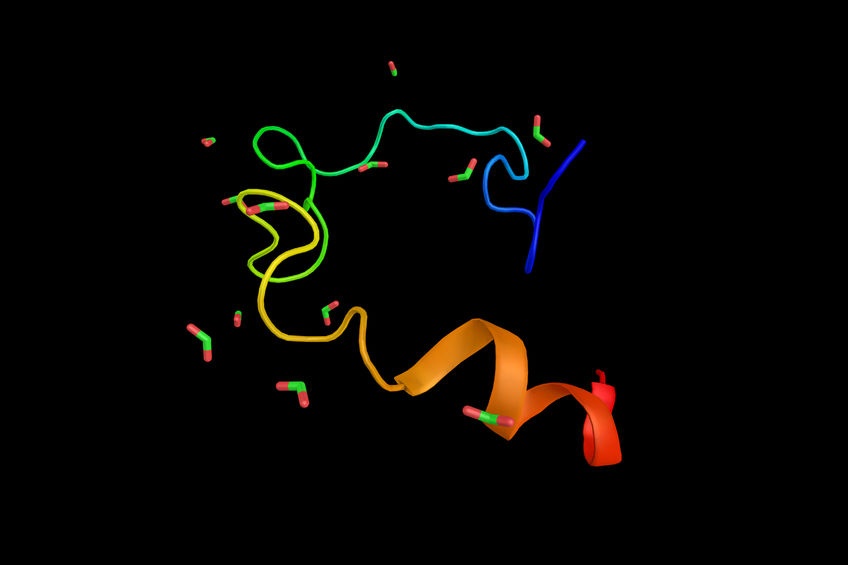 Mike Yee
Mike Yee
You’ve likely learned in biology, physiology, or biochemistry classes about enzymes that are converted from zymogens into active enzymes. And you might have encountered an enzyme type called proteases that catalyze protein degradation or cleave molecular bonds. For example, if you’ve worked with cell culture, you may have used proteases to digest the extracellular matrix, so as to detach the cells for collection. Proteolytic functions are important for many reasons, but more needs to be understood of the way proteases act as signaling molecules.
A recent announcement and call for abstracts for a Special Symposium on Membrane-Anchored Serine Proteases scheduled for Sept. 14-17 by the American Society for Biochemistry and Molecular Biology highlight just how important these proteases are for health and disease. Below is an introduction to two of the symposium’s invited speakers. Preliminary program topics include membrane-anchored serine proteases in cancer, infection and host defense, physiology, metabolism, and homeostasis. Check back on the ASBMB website for the full program and abstracts.
Keynote Speaker: Dr. Toni Antalis, University of Maryland
Dr. Antalis’ research interests focus on understanding the signaling mechanisms involving serine proteases, including the group of membrane-bound serine proteases that have recently been brought to light. Antalis’ research has illuminated the role of such proteases in intestinal epithelial barrier function, coagulation, cancer, and fertility. Antalis recently wrote an introduction to the role of one such transmembrane protease, matriptase, in coagulation signaling.
Matriptase is expressed on nearly all epithelial cells and plays a role in barrier integrity. Although tissue factor (TF) / factor VIIa (FVIIa) and (Factor Xa) FXa have previously been shown to activate PAR2 (protease-activated receptor 2) on epithelial cells, FVIIa and FXa have also been shown to activate the matriptase zymogen, which led to PAR2 signaling, as referenced in this study. In another study, matriptase was also shown to be activated indirectly by a glycosylphosphatidylinositol (GPI)-anchored protease called prostasin, and a new signaling pathway for matriptase in tissue injury was revealed. Antalis’ work has also encompassed studies of another GPI-anchored protease called testisin, which cleaves the N-terminal domain of PAR2 and has a role in testicular cancer.
Invited Speaker: Dr. Shaun Coughlin, UCSF
A 2016 paper describes the imaging of a GFP-based caspase reporter of apoptosis in vivo in live zebrafish embryos. Whereas FRET (Förster resonance energy transfer)-based reporters give a weak signal and iCasper (infrared fluorogenic caspase reporter) system is limited by a cofactor requirement, Coughlin’s group discusses the design of a reporter they call ZipGFP. ZipGFP was designed to initially be in a “zipped” yet disassembled stage so that proteolytic cleavage of the specific sequence would lead to “unzipping” of the reporter, which would then assemble itself and lead to increased fluorescence. This was shown in human glioblastoma LN229 cells where apoptosis was induced by the addition of staurosporine and caspase 3 activity was reported at a 5-10 fold increase of fluorescence on top of the coexpressed mCherry.
Coughlin’s group also used zebrafish—chosen because of their transparent bodies—as one of the powerful model organisms. After injection of ZipGFP mRNA into the zebrafish embryo along with mCherry mRNA, they observed increased green fluorescence that extended over time in the brain region and into the body. This technique is significant because it can be applied to study protease activity and apoptosis in vivo in health and disease. For example, for my dissertation project, I hoped to use a technique like this to determine whether proteases found in aeroallergens are actually binding and activating the protease-activated receptor 2, and I'm still interested in testing this in the future.
These are just two of the outstanding presenters headlining September’s symposium. I’ve studied a specific protease-activated receptor signaling pathway for a significant chunk of my life. My group's research has led to the identification of an Alternaria alternata serine protease found in the fungal samples, and our studies also led us to investigate the role of mast cell tryptase. Just note that these are not known to be membrane-anchored proteases. So I may be more excited than others, but anyone interested should check out this symposium and register to learn more about why proteases aren’t your typical digestive enzymes.
Quartzy is the world’s No. 1 lab management platform. We help scientists easily organize orders, manage inventory, and save money. We’re free and always will be. Visit Quartzy.com or reach out at info@quartzy.com.
Interested in writing for The Q? Send us an email!
Share this:

mikecyee
Mike has a Ph.D. in Biomedical Sciences from the University of California, Riverside, a M.S. in Cell and Molecular Biology from San Francisco State University, and a B.A. in English from the University of California, Berkeley.
